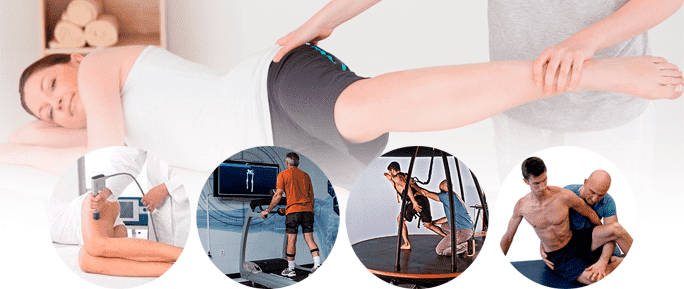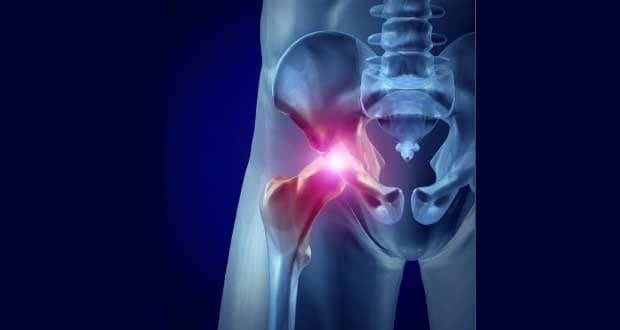
A hip flexor strain occurs when one of the hip flexors has been pulled too hard, injured, or torn. Flexors are a set of muscle tissues that are engineered to stretch and move, adding range of motion to the area. The hip flexors connect the upper part of the femur (large leg bone) to the lower back, hip, and groin.
Minor hip flexor wounds are classified as a grade one tear and do not usualy end up causing much long-term damage. Most hip flexor wounds are classified as a second degree strain and involve a small rip or hyper-extension of the associated tissues. If the hip flexors are yanked too, this can result in the muscles losing their connection with the bone. Although this occurs rarely, it is classified as a third degree sprain and may also result in a small break of the bone on top of the muscle sprain.
The hip flexors are the associated groups of special muscle fibers that allow a person to bring their leg and knee up in the direction of their torso. Hip flexors are most often used for vigorous activities like sprinting, kicking, dancing, or bending at the waist. Hip flexor tissues can become wounded through overuse but are more commonly torn when a contraction occurs under pressure or when the leg is straight out and then is forced to hyper extend.
Sports medicine has discovered that hip flexor wounds are often associated with developing hamstring strains due to the fact that tightened or injured hip flexor tissues can add additional pressure on the tissues of the lower leg (commonly known as hamstrings).
A number of athletes participating in certain vigorous activities are at a higher risk of developing a hip flexor wound. People who are playing soccer, rugby or American football and then receive a strike to the lower extremity or hip while trying to kick a ball can easily develop a hip flexor wound. Another class of sports people that often becomes vulnerable to hip flexor wounds is runners who often rip these muscles at the start of a race. Other vigorous past-times that pose a danger of developing hip flexor wounds include bicycle racing, gymnastics, and martial arts.
Tight, inflexible, or improperly warmed-up hip tissues are always in danger of becoming sprained. Some hip flexor wounds are the result of cumulative stress on the associated muscle tissues as a result of constant kicking, an activity associated with sports like soccer, rugby and football, or engaging in a lot of sprints and quick takeoffs from the starting block.

Hip flexor wounds are rarely diagnosed in a clinical setting but the common symptoms that accompany this type of injury include:
Symptoms are usually made worse when a person with a hip flexor wounds attempts to lift their knee up and towards their torso, when traveling upstairs, or attempting to run, jump, or kick.
Secondary symptoms of a hip flexor wound include tightness, soreness, and stiffness after long periods of not moving, including when waking up after a long sleep.
Few hip flexor sprains require a trip to the doctor. The standard course of therapy for this type of wound is to rest for a couple of days. The application of ice is recommended, as long as it is not placed directly on naked skin, for periods of 15-25 minutes a day, to be repeated 3-5 times daily for the first two days after the onset of the sprain.
Discomfort and any incidents of localized swelling can be reduced by the use of an over-the-counter pain drug. Some people with a hip flexor wound may find that wearing a compression wrap around the area of the wound helps to reduce discomfort. Full recovery from a hip flexor sprain may take anywhere between one and eight weeks.
More severe cases of a hip flexor wound may require medical intervention. Medical personnel may use X-rays, MRI, or CT scans in order to properly diagnose the presence of a hip flexor wound. In severe cases of pain resulting from a hip flexor wound, it may be required to perform an X-ray to locate any potential bone fractures.

A clinical exam and diagnostic ultrasound imaging can help your therapist pinpoint the exact location and cause of your hip and groin pain.
Ultrasound enables you and your therapist to view the hip and groin region in real time, while in motion. In addition to ultrasound, video gait analysis can help us identify faulty movement mechanics that contribute to hip and groin pain. Once the exact cause is determined, an effective treatment plan can be initiated.

Please explore more advanced diagnostic option unavailable anywhere else:

Our testing protocol includes:
Combined lumbopelvic hip stability test using DLEST methodology with C.A.R.E.N., our computer assisted rehab environment
Hip joint stability test using DLEST methodology with C.A.R.E.N.
3D star excursion banner test (SEBT) for assessing the involvement of the hip joint and muscles in postural stability
3D gait or running analysis
3D kinematic joint angle analysis during a squat, lunge, drop jump and pelvis on hip rotation
Rehabilitative ultrasonography for viewing intrinsic hip stabilizing muscle activation patterns
Dr. Lev Kalika is a world-recognized expert in musculoskeletal medicine. with 20+ years of clinical experience in diagnostic musculoskeletal ultrasonography, rehabilitative sports medicine and conservative orthopedics. In addition to operating his clinical practice in Manhattan, he regularly publishes peer-reviewed research on ultrasound-guided therapies and procedures. He serves as a peer reviewer for Springer Nature.
Dr. Kalika is an esteemed member of multiple professional organizations, including: